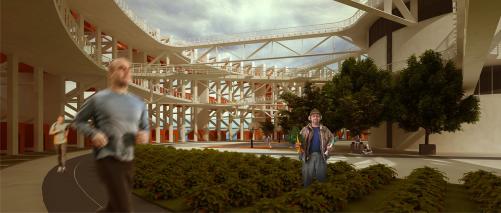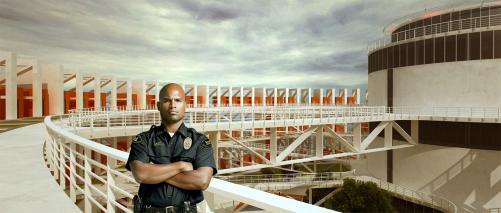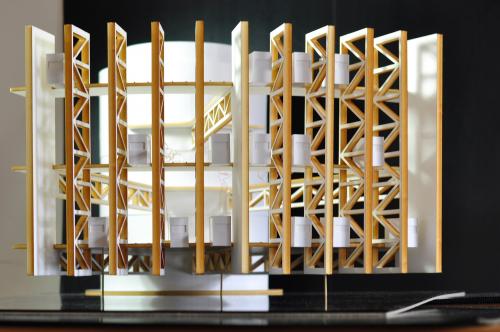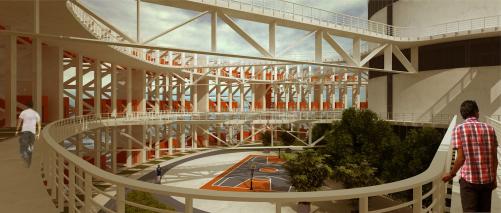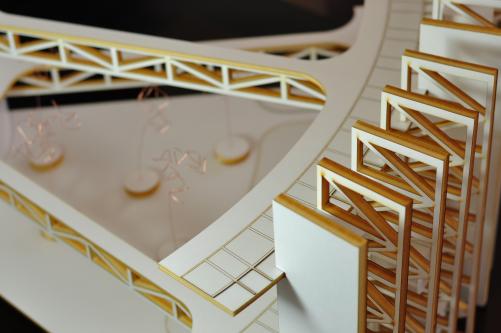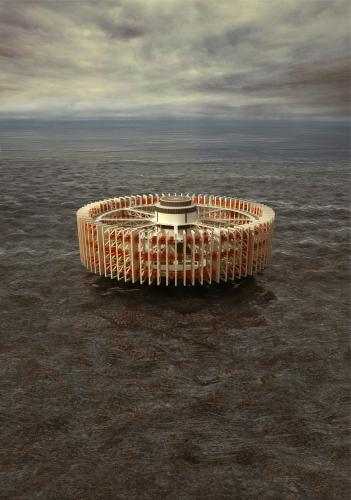- Programmes in English 2025/2026
- Admission 2024/2025 Scholarships
- For exchange students
- Free Movers
- Transfer studies
- Erasmus+ studies and traineeships
- Mentor programme
- Student testimonials
- Accommodation
- Career Services
- Medical Care
- Immigration Regulations
- Leisure and Student Activities
- Useful information
- VILNIUS TECH for Creators of Tomorrow
- Mental and spiritual support
- Representatives Abroad
- Contacts
- Computer Engineering
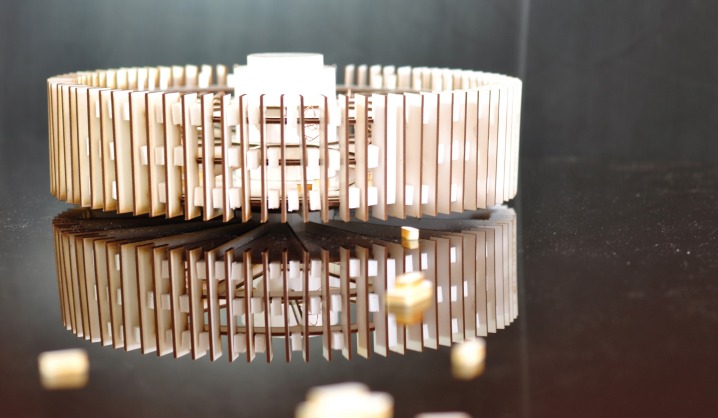
2015-01-21
VGTU graduate suggests moving prisons into the water area
Generally, a prison is not a preferable neighbourhood - perhaps because of its specifics. Based on this opinion, Master's degree graduate in architecture at Vilnius Gediminas Technical University (VGTU), has created a project of a modern offshore prison. Her project is innovative not only in modern architecture, but also in harmonisation of processes of the convicts‘ isolation from the public and reduction of their social separation.
An international competition of architecture prompted the idea for the project of architect Alina Nikitina. It is an offshore prison, located in water area several kilometres far from the coast of the Singapore Strait. A small country having a high-level criminality and high population density can apply this project.
"My goal was to create a model of a universal re-socialization prison, with the most important principle of operation, when the sentenced person is gradually returning to the society after a period of complete isolation. The proposed structure directly reflects three levels, which the convict should go through, till the recovery of his freedom", - explained Alina Nikitina, currently working in an architect’s studio in Vilnius.
The prison, reminding a small city, has the most stringent, strict and ordinary prison regimes. The accessibility to community-based activities defines the degree of prison regime: the lower is the level, the more limited are the confined person‘s operational capabilities and access to the territory of the prison.
Accommodation in prison depends on the severity of the crime performed and the duration of the imprisonment, for example, the newcomer lives in the most stringent prison regime level, spending most of the time in isolation. Later, the prisoner together with his prison cell moves to the strict regime level, where he can work. At the highest level - ordinary regime prison – the inmate is free to communicate and interact freely, engaging in leisure, sporting and economic activities. There is a library, a room for meetings, leisure and educational places with computer classrooms on this floor.
VGTU Master of Science offers a single prison cell for a prisoner, integrating it into the structure of the prison at the beginning, and later on transferring it to other levels. After serving the term of imprisonment, the convict‘s prison cell would be dismantled and, together with the former prisoner, would go to the shore, where it could become his temporary housing. By changing the placement of prison cells in the prison, the appearance of the prison would be constantly updated, representing the effectiveness of the prison and the social system itself: dense, almost closed structure being a sign of wrong social policy, while a completely transparent structure - a symbol of ideal society.
Staff and visitors could reach the prison by both air and water: the project provides a free landing platform equipped for helicopters as well as a pier for small cargo and passenger vessels.
Inspiration and ideas for her final Master's degree project VGTU graduate found not only in Lithuania, but also abroad – through exchange programmes she studied in Italy and China, gained her first architectural experience, while working in Denmark. The leader of Alina Nikitina‘s project is Rolandas Palekas, VGTU Professor of the Department of Architecture, famous architect and this year’s winner of the Lithuanian National Culture and Art Prize.












